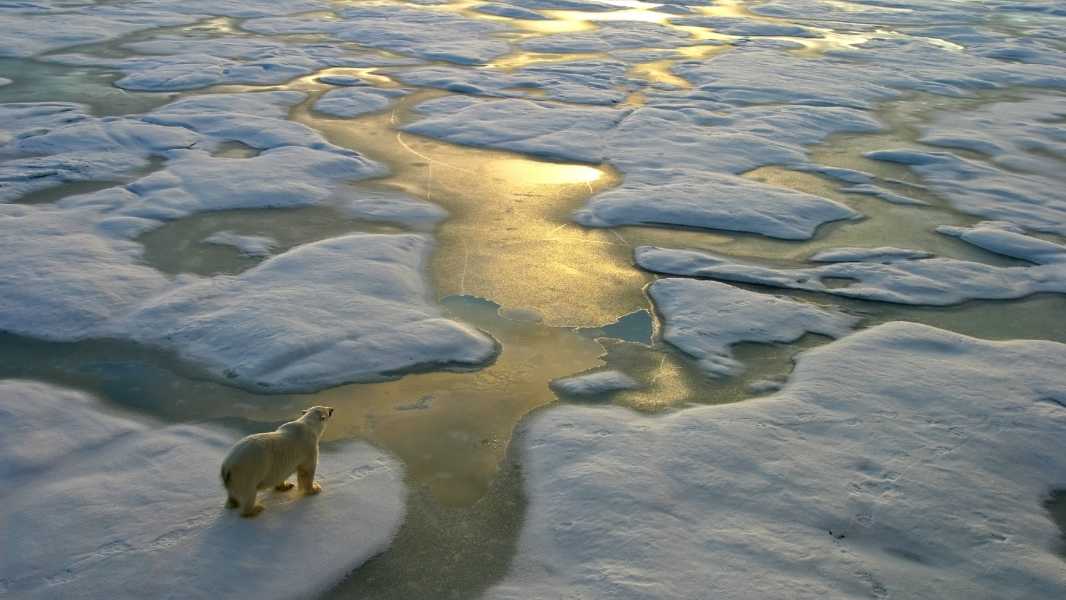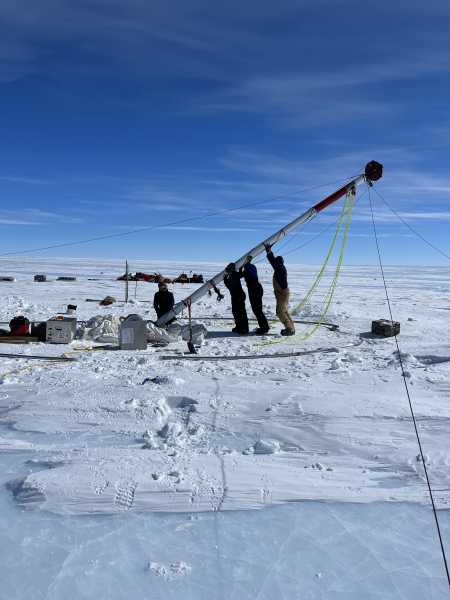
People and wildlife depend on sea ice for survival. (Photo credit: SeppFriedhuber via Getty Images)
The world's ice cover was at its lowest level on record last month, new data show, providing a stark reminder of how quickly our planet is warming.
Sea ice is frozen seawater that sits on the ocean's surface. As the planet warms, sea ice is shrinking. In February 2025, sea ice around the poles reached a “historic minimum” compared to the previous February (recordings began in 1979), according to the European Union's Copernicus Climate Change Service.
“One of the consequences of global warming is the melting of sea ice, and record low or near-record low sea ice levels at both poles have resulted in total sea ice cover reaching historic lows,” Samantha Burgess, climate strategy lead at the European Centre for Medium-Range Weather Forecasts, which runs the Copernicus programme, said in a statement.
The loss of sea ice can trigger a cascade of negative environmental impacts for both humans and the wildlife that live on it. Melting also further accelerates global warming because the newly exposed ocean beneath the ice reflects less sunlight than bright ice.
In its statement, Copernicus publishes monthly reports on the state of sea ice and global temperature, so its estimates are based on billions of measurements from satellites, ships, aircraft and weather stations around the world.
Last month, Copernicus scientists reported that January 2025 was the warmest January on record, despite Earth being in La Niña, the cold phase of the El Niño climate phenomenon. The latest report notes that February 2025 was the third-warmest February on record, not setting a record but continuing a worrying warming trend.
February 2025 was, on average, 2.86 degrees Fahrenheit (1.59 degrees Celsius) warmer than preindustrial levels, the projected average temperature between 1850 and 1900. World leaders previously pledged to limit warming to below 2.7 F (1.5 C) and well below 3.6 F (2 C) in the 2015 Paris Agreement, a binding international treaty. However, Earth is now consistently above the 2.7 F target, and February 2025 was the 19th month in the last 20 to exceed 2.7 F.
Temperatures can fluctuate from year to year, so climate change doesn’t mean that every new month will set records. However, there is a clear overall trend that the planet is getting warmer. Last year was the first full year in which temperatures exceeded 2.7 F, making it the hottest year on record since pre-industrial times.
Not all regions of the planet are warming at the same rate. Last month, severe winter storms brought record cold to the United States, and Copernicus data showed that much of North America was cooler than average in February. But temperatures were mostly above average in the rest of the world.
Temperatures in the high Arctic have been especially warm, with scientists recording an “extreme” warming of 36 F (20 C) at the North Pole on Feb. 2, Live Science previously reported. The Arctic is warming about four times faster than the rest of the world, an effect attributed to melting sea ice.
Climate change threatens billions of people around the globe. The effects of global warming include increased wildfires and other extreme weather events that destroy homes; rising sea levels that threaten
Sourse: www.livescience.com





